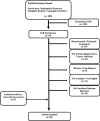Functional outcome of traumatic spinopelvic instabilities treated with lumbopelvic fixation
- PMID: 32913181
- PMCID: PMC7483410
- DOI: 10.1038/s41598-020-71498-6
Functional outcome of traumatic spinopelvic instabilities treated with lumbopelvic fixation
Abstract
The aim of this study was to assess the functional outcome after lumbopelvic fixation (LPF) using the SMFA (short musculoskeletal functional assessment) score and discuss the results in the context of the existing literature. The last consecutive 50 patients who underwent a LPF from January 1st 2011 to December 31st 2014 were identified and administered the SMFA-questionnaire. Inclusion criteria were: (1) patient underwent LPF at our institution, (2) complete medical records, (3) minimum follow-up of 12 months. Out of the 50 recipients, 22 questionnaires were returned. Five questionnaires were incomplete and therefore seventeen were included for analysis. The mean age was 60.3 years (32-86 years; 9m/8f) and the follow-up averaged 26.9 months (14-48 months). Six patients (35.3%) suffered from a low-energy trauma and 11 patients (64.7%) suffered a high-energy trauma. Patients in the low-energy group were significantly older compared to patients in the high-energy group (72.2 vs. 53.8 years; p = 0.030). Five patients (29.4%) suffered from multiple injuries. Compared to patients with low-energy trauma, patients suffering from high-energy trauma showed significantly lower scores in "daily activities" (89.6 vs. 57.1; p = 0.031), "mobility" (84.7 vs. 45.5; p = 0.015) and "function" (74.9 vs. 43.4; p = 0.020). Our results suggest that patients with older age and those with concomitant injuries show a greater impairment according to the SMFA score. Even though mostly favorable functional outcomes were reported throughout the literature, patients still show some level of impairment and do not reach normative data at final follow-up.
Conflict of interest statement
The authors declare no competing interests.
Figures
References
-
- Allen BL, Ferguson RL. The Galveston technique for L rod instrumentation of the scoliotic spine. Spine (Phila Pa 1976) 1982;7:276–284. - PubMed
-
- Allen BL, Ferguson RL. The Galveston technique of pelvic fixation with L-rod instrumentation of the spine. Spine (Phila Pa 1976) 1984;9:388–394. - PubMed
-
- Käch K, Trentz O. Distraction spondylodesis of the sacrum in “vertical shear lesions” of the pelvis. Unfallchirurg. 1994;97:28–38. - PubMed
-
- Schildhauer TA, Josten C, Muhr G. Triangular osteosynthesis of vertically unstable sacrum fractures: a new concept allowing early weight-bearing. J. Orthop. Trauma. 1998;12:307–314. - PubMed
-
- Schildhauer TA, et al. Decompression and lumbopelvic fixation for sacral fracture-dislocations with spino-pelvic dissociation. J. Orthop. Trauma. 2006;20:447–457. - PubMed
Publication types
MeSH terms
LinkOut - more resources
Full Text Sources
Medical



